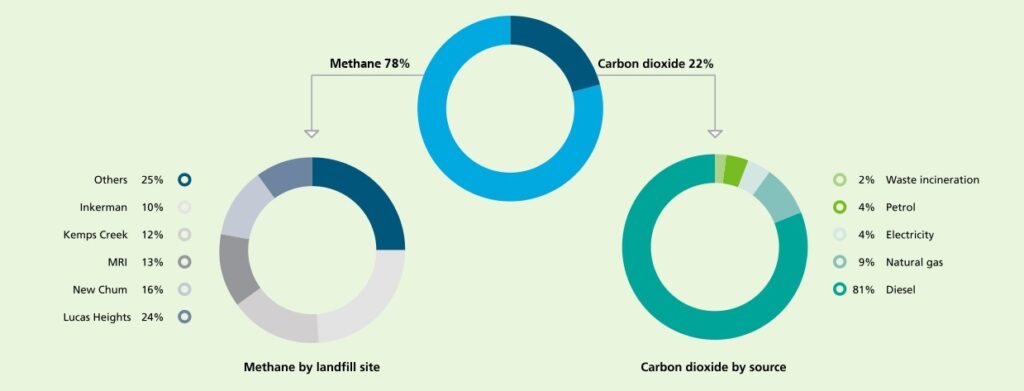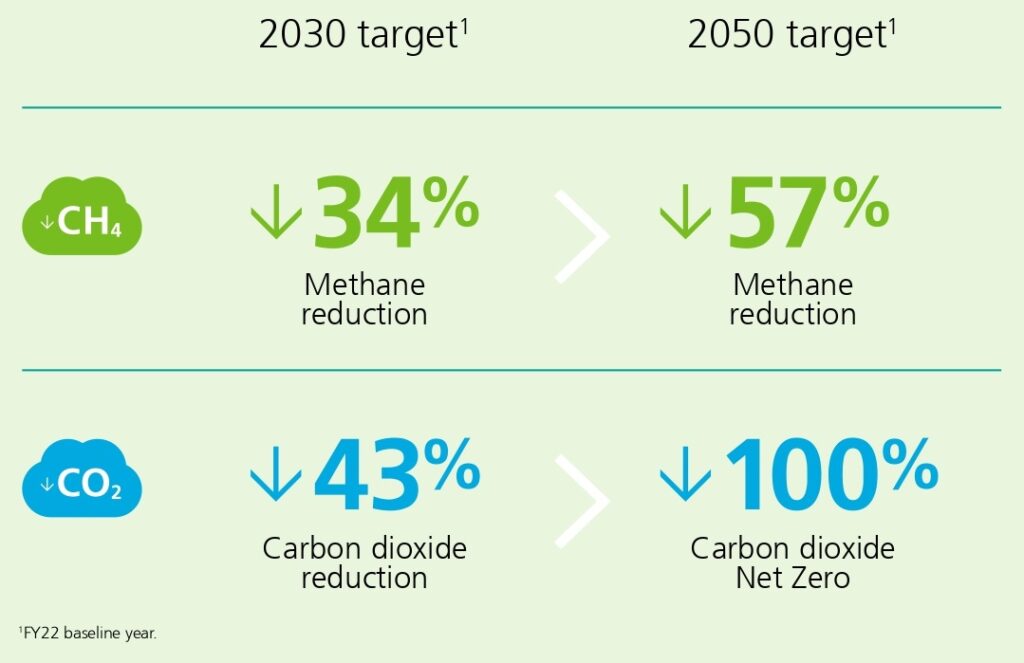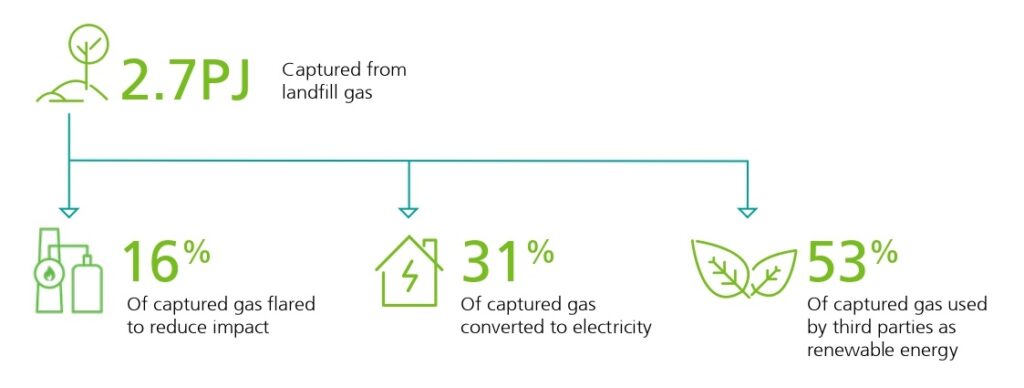“We set our emissions targets to align with leading science and global climate dialogues, and we will ensure that these targets are underpinned by concrete activities in all business units right across Cleanaway."
"Lowering our operational emissions will benefit our customers, too. Reduction in our emissions translates to lower cycle emissions for our customers."
“We set our emissions targets to align with leading science and global climate dialogues, and we will ensure that these targets are underpinned by concrete activities in all business units right across Cleanaway."
"Lowering our operational emissions will benefit our customers, too. Reduction in our emissions translates to lower cycle emissions for our customers."
On 23 October the federal government signed up to the Global Methane Pledge. This commitment will see Australia reduce global methane emissions by at least 30% below 2020 levels by 2030.
Cleanaway recognises the role the waste and resource recovery sector has in reducing methane emissions.
Waste management activities generate two different greenhouse gases: methane and carbon dioxide. When expressed on a carbon dioxide equivalent basis, around 80% of our greenhouse gas emissions come from methane, generated from the natural breakdown of waste across 10 active and closed landfill sites.
Around 20% of our greenhouse gas emissions come from carbon dioxide, primarily from the combustion of fossil fuels in our fleet, the electricity we use, and the natural gas we burn at our facilities.

Pictured: Cleanaway’s greenhouse gas emission profile. Total emissions are expressed in carbon dioxide equivalent.
To reduce our carbon emissions footprint, we have separated our methane and carbon dioxide targets which will help us drive specific emission reduction initiatives across our business.
For methane emissions, we have set a -30% reduction target by 2030. For carbon dioxide emissions, we have set a net zero target by 2050. Our 2030 targets are consistent with Australia’s 2030 emission goals outlined by the Global Methane Pledge.

Pictured: Our separate 2030 and 2050 reduction targets for methane and carbon dioxide.
Our FY21 Sustainability Report outlined our ambition to align reductions in greenhouse gas emissions to the 2015 Paris Agreement. That included holding the increase in global average temperature to well below 2°C above pre-industrial levels and to pursue efforts to limit the temperature increase to 1.5°C above pre-industrial levels.
Head of Carbon Taku Ide said “We set our emissions targets to align with leading science and global climate dialogues, and we will ensure that these targets are underpinned by concrete activities in all business units right across Cleanaway.”
“Lowering our operational emissions will benefit our customers, too. Reduction in our emissions translates to lower cycle emissions for our customers.”

Pictured: In FY22 more than half of all our captured landfill gas was used by third parties as renewable energy.
As Australia’s leading waste management solutions company Cleanaway continues to lead the line of carbon reduction technology. Our recent partnership with Zeotech and Griffith University will help us optimise our landfills by using manufactured zeolite .
We are also pushing the envelope of fleet decarbonisation by undertaking Australia’s most ambitious hydrogen mobility project. This project will explore the performance, impact and real-world experience of hydrogen fuel cell electric vehicles (FCEVs) for fleet owners and operators, customers and other road users.
Our FY22 Sustainability Report details our commitment in expanding our knowledge and technology with the aim of reducing our greenhouse gas emissions.
It also highlights the importance of our low carbon transition across our three sustainability pillars: people, planet and prosperity.
Contact us to learn more about how we’re making a sustainable future possible for communities and businesses across Australia.